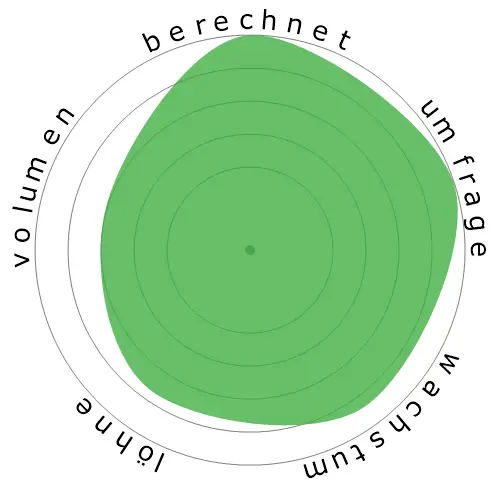Physiotherapeuten




Personen haben sich auch angesehen
Berechnetes Automatisierungsrisiko
Minimales Risiko (0-20%): Berufe in dieser Kategorie haben eine geringe Wahrscheinlichkeit, automatisiert zu werden, da sie in der Regel komplexe Problemlösungen, Kreativität, starke zwischenmenschliche Fähigkeiten und ein hohes Maß an manueller Geschicklichkeit erfordern. Diese Jobs beinhalten oft komplexe Handbewegungen und präzise Koordination, was es für Maschinen schwierig macht, die erforderlichen Aufgaben zu replizieren.
Weitere Informationen darüber, was dieser Wert ist und wie er berechnet wird, sind verfügbar hier.
Benutzerumfrage
Unsere Besucher haben abgestimmt, dass es eine geringe Chance gibt, dass dieser Beruf automatisiert wird. Diese Einschätzung wird weiterhin durch das berechnete Automatisierungsrisiko unterstützt, welches eine 0,0% Chance der Automatisierung schätzt.
Was denken Sie, ist das Risiko der Automatisierung?
Wie hoch ist die Wahrscheinlichkeit, dass Physiotherapeuten in den nächsten 20 Jahren durch Roboter oder künstliche Intelligenz ersetzt wird?
Gefühl
Das folgende Diagramm wird überall dort eingefügt, wo eine beträchtliche Anzahl von Stimmen vorliegt, um aussagekräftige Daten darzustellen. Diese visuellen Darstellungen zeigen die Ergebnisse von Nutzerumfragen im Laufe der Zeit und geben einen wichtigen Hinweis auf Stimmungstrends.
Gefühlslage über die Zeit (jährlich)
Wachstum
Die Anzahl der 'Physical Therapists' Stellenangebote wird voraussichtlich um 14,2% bis 2033 steigen.
Gesamtbeschäftigung und geschätzte Stellenangebote
Aktualisierte Prognosen sind fällig 09-2025.
Löhne
Im Jahr 2023 betrug das mittlere Jahresgehalt für 'Physical Therapists' 99.710 $, oder 47 $ pro Stunde.
'Physical Therapists' wurden 107,5% höher bezahlt als der nationale Medianlohn, der bei 48.060 $ lag.
Löhne über die Zeit
Volumen
Ab dem 2023 waren 240.820 Personen als 'Physical Therapists' in den Vereinigten Staaten beschäftigt.
Dies entspricht etwa 0,16% der erwerbstätigen Bevölkerung im ganzen Land.
Anders ausgedrückt, ist etwa 1 von 630 Personen als 'Physical Therapists' beschäftigt.
Stellenbeschreibung
Bewerten, planen, organisieren und teilnehmen an Rehabilitationsprogrammen, die die Mobilität verbessern, Schmerzen lindern, die Kraft erhöhen und Beeinträchtigungen oder Behinderungen verbessern oder korrigieren, die durch Krankheit oder Verletzung entstanden sind.
SOC Code: 29-1123.00


Kommentare
Leave a comment
Big issue is one of liability. When the Pt does something incorrectly, or gets hurt doing something, who becomes liable?
Not possible in next 30 years.
The data you say will help us only.
Long answer - while I agree with the previous commenters that 'Someone needs to be there', who is that someone? Is it just a PT Assistant and a chatbot that comes up with the plans and the assistant guides the exercises? You need to consider reduction in job scale (thus salary) here not just elimination.
I say no overall because the way I think about it is people will pay for this service (mainly the care/psychological aspect and not just the exercises that they could find on google already). I have been in this situation myself. This isn't a fast food restaurant where people just want their food and don't care how it is made. I think if the therapist is good at the care, patient management, psychology, and any additional 'experience' aspects in addition to knowing the technical stuff they will be fine.
I am a physical therapist. We don't treat injuries based solely on reported impairments. We view each injury holistically. If AI can treat chronic pain patients better than us therapists, then that would be a nice day.
Plus, would you rather have a robot treating and instructing you to exercise? I don't think so. Physical therapists also face patients who are in their worst state. Imagine being treated by robots like Darth Vader. Yes, that might sound profitable for some hospitals, but ask any patient if they would like to be handled solely by robots.
We're not just patting your backs or asking you to lift some weights. We see you as more than just your back problem. We don't just zap or pat your backs.
Furthermore, in most health problems that physios treats, exercise is the most recommended intervention. And many exercises can be done without a professional supervision. This scenario could allow a patient to download an app that facilitates to conduct a self treatment.
If all physiotherapy was, was prescribing exercises, then it would definitely have a huge chance of being replaced by automation soon. Look at the field of radiology for a good example of this phenomenon—technology is getting exceedingly good at finding and diagnosing illnesses without human help. But the work physios do is diverse. Yes, prescribing exercises is a part of the job, but hands-on manual therapy is just as important. The variety of work within the field of physiotherapy is enormous as well. Physios may specialise in everything from working with athletes to patients with neurological disorders.
Physiotherapists undergo training in tangential fields, such as psychology, in order to be better able to understand their clients. After all, the goal is really to help patients in the best possible manner! Great physios also act as psychologists, guiding their patients through the mental challenges of rehabilitation and overcoming injury or illness (which may take place over the course of several months). Just like in occupational therapy (physiotherapy's sister), human-to-human interaction is a huge part of the job. This isn't something that can be replaced by a robot, at least not easily...
You never know fifty, one hundred years down the line. Just look at the difference between 2020 and 1970, 2020 and 1920. Honestly though, physiotherapy is absolutely safe considering the current situation of technological development. It will be one of the fastest growing, in-demand occupations in the next few decades.
Hinterlassen Sie eine Antwort zu diesem Beruf